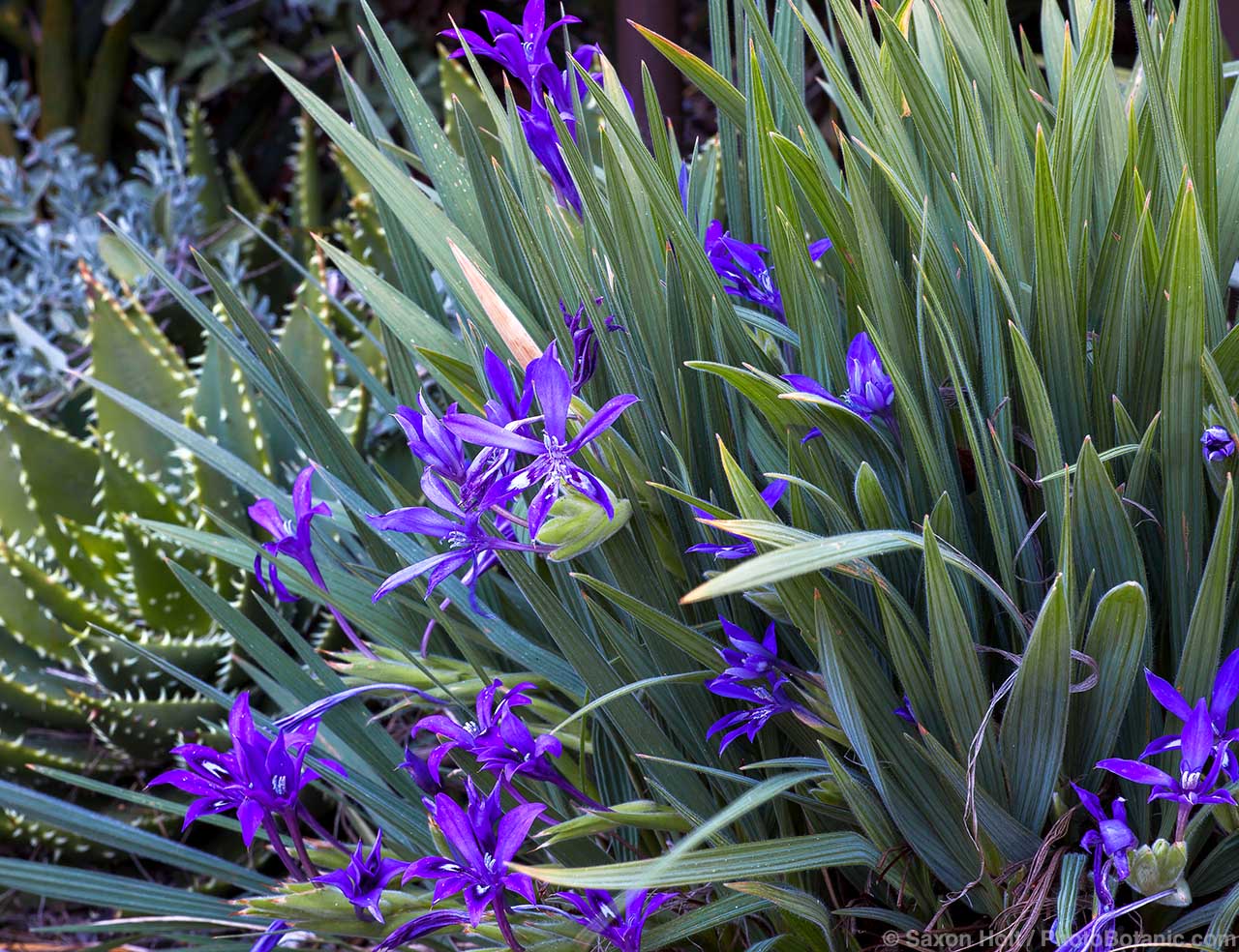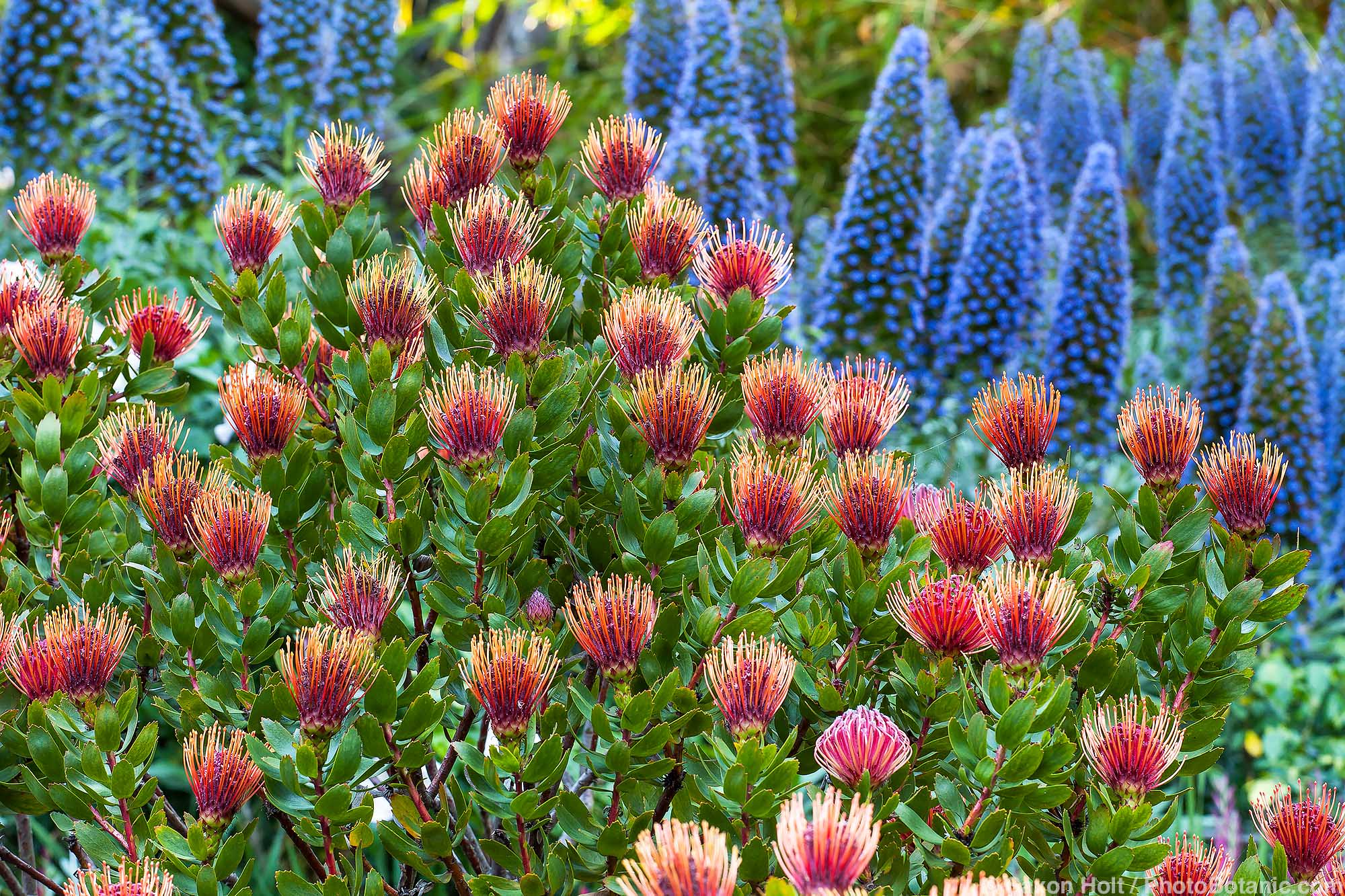White Sage
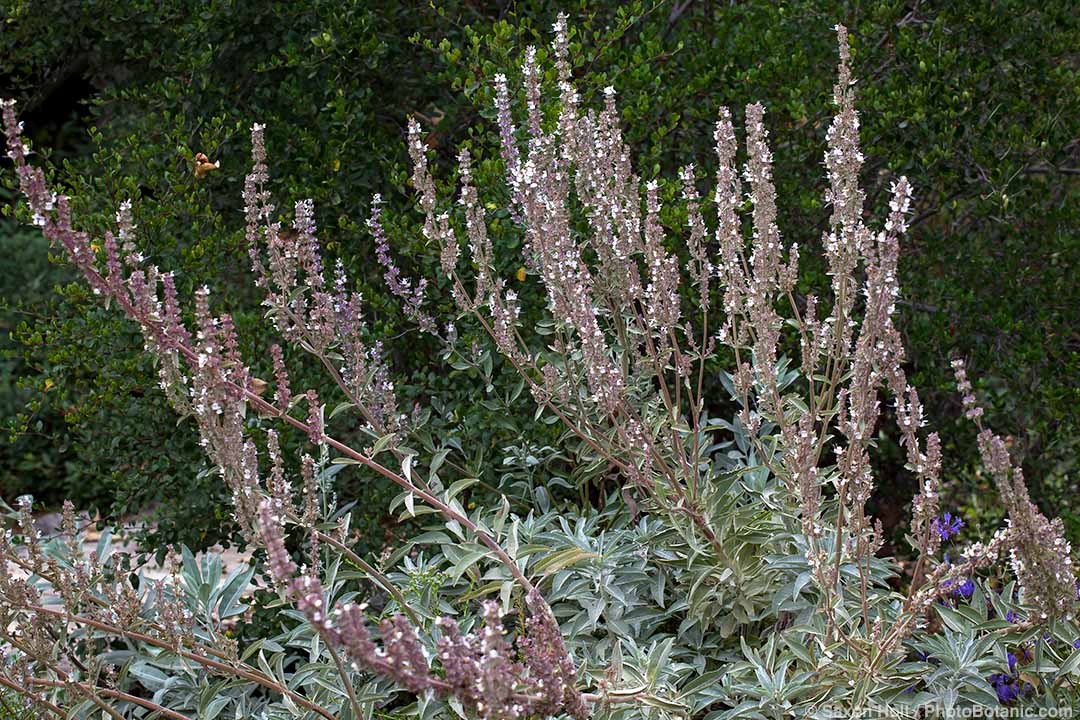
Share This!
The standout qualities of California white sage (Salvia apiana) come into sharpest focus in August or September, when many other summer-dry salvias have gone over, dropping their leaves and sprawling widely, bare and somewhat rangy at near-complete rest. There it is, white sage, in its late-summer finery, looking, though different, as handsome as it did in spring.
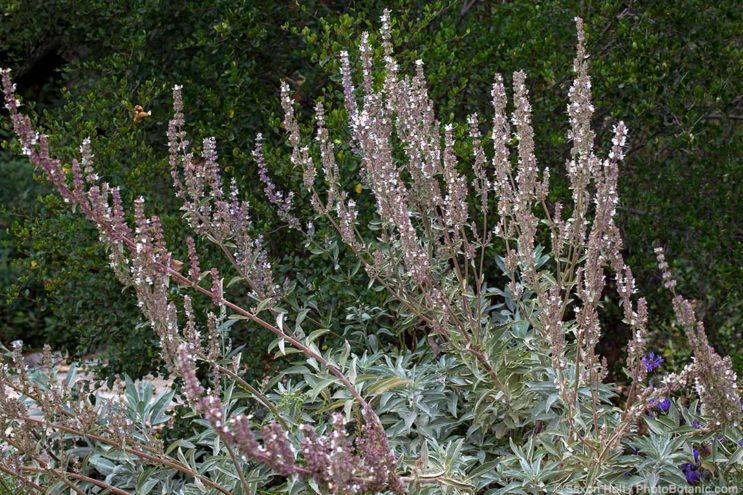
Salvia apiana, California white sage, in summer
White sage does go through seasonal stages but all are attractive. Its new leaves in late winter are gray-green and lightly felted, broadly lance-shaped or elliptic, and the 2- to 4-foot shrub is bushy and full. The distinctively aromatic, almost pungent, resinous leaves gradually mature to a silvery gray with bright white undersides.
Small but numerous white to pale lavender, spring-summer flowers are borne in short, tight, spikelike clusters spaced out along upright, unbranched, initially leafy stems. Flowering stems appear suddenly and elongate improbably, eventually rising five to seven feet above the foliage and losing their leaves.
In the high heat of summer the height and dusty purplish pink color of the now-leafless flowering stems are even more prominent. The plant drops older leaves as well, leaving the newest leaves, now held more upright in neat rosettes, exposing their white undersides and giving the entire shrub a bluish white cast. As flowers drop, even the tiny, brown seedheads are decorative as they glisten in the sun.
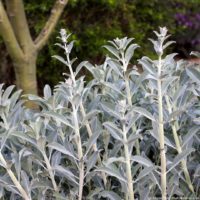
Salvia apiana, as flowering stems begin to appear
White sage is native to chaparral, coastal sage scrub, and yellow pine forest in southern California and northern Baja California. It can be found from the coast to the mountains and the western edge of the Mojave and Sonoran deserts.
Give this plant full sun and excellent to perfect drainage. Brief but not prolonged freezing is usually tolerated. No supplemental water is needed once the plant is established, although a rare dose of summer water–the monsoon equivalent–may be appreciated.
Share This!
Related Articles
By: Nora Harlow
By: Nora Harlow
By: Nora Harlow




